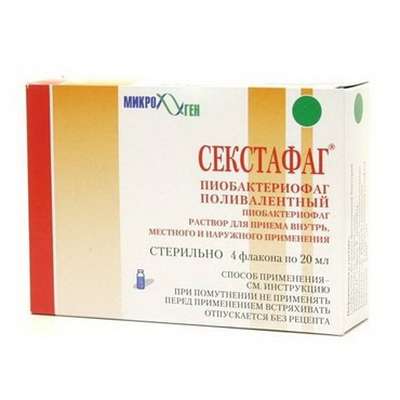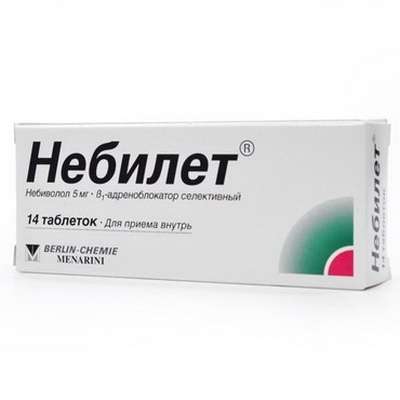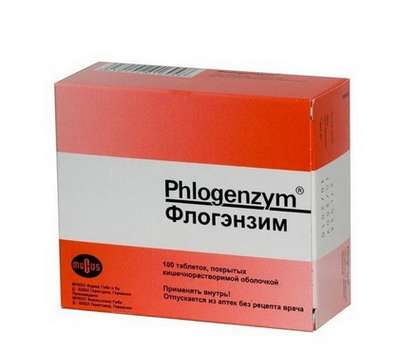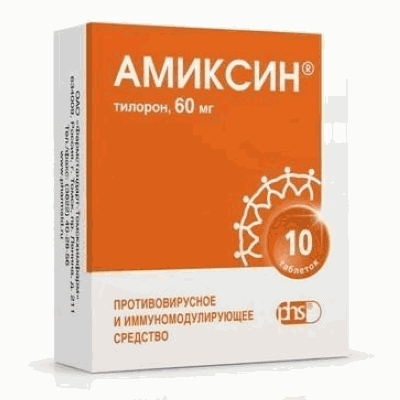Glucose
12 May 2017
What do we know about glucose? It would seem that everything that could be learned has long been recognized and used. However, life shows that this is not so. We constantly learn something new, unknown before, something is being specified and corrected. After all, science does not stand still.
We all know that glucose is the main energy substrate of the body. Though it contains half the calories of fat, it oxidizes much faster and easier than any other substance that can supply energy to the body. All carbohydrates are absorbed into the intestines. There is a so-called "glycemic index", which allows us to compare the rate of absorption of individual carbohydrates. If we take the rate of absorption of glucose as 100, then, respectively, the value for galactose will be 110, for fructose 43, mannose - 19, pentose 9-15. All monosaccharides are phosphorylated into the cells of the intestinal mucosa; Form phosphoric esters. Only in this form carbohydrates can be involved in energy metabolism. Phosphorylation occurs with the participation of special enzymes, which are activated by insulin. All is well, but the trouble is: during heavy physical work, during a competitive distance or a long-term endurance training, the release of insulin into the blood constantly decreases, otherwise it will inhibit the breakdown of glycogen, fat and protein stores to glucose. However, glucose released into the blood is poorly utilized by the muscles because of a lack of insulin, because it can not be phosphorylated. There is a vicious circle that is quite numerous in the body: in order to saturate the blood of the working organism with glucose, it is necessary to get rid of excess insulin, and in order to use the glucose thus obtained, the body lacks insulin to phosphorylate it. It turns out neither that, nor this. The body secretes insulin, but just a little, and enough for your and ours, so that the glycogen breaks down and at the same time that glucose is somehow absorbed by the working muscles. Where is the way out? It turned out to be extremely simple: it is necessary to synthesize phosphorylated carbohydrates, carbohydrates with already attached phosphorus residues. Then the wolves will be full and the sheep are safe. The body can at least completely stop the production of insulin. Phosphorylated carbohydrates are instantly absorbed in the intestines, no one even takes their glycemic index, and is instantly included in the exchange. Phosphorylated carbohydrates are a new milestone in sports nutrition at the distance and during training. Their reception allows you to conduct training with unprecedented efficiency until now and organize meals at a distance, for example, stayer so that all sports achievements will improve dramatically. Phosphorylated carbohydrates are an excellent means for carbohydrate loading, for post-training carbohydrate loading. Their use can significantly increase the body's resistance to hypoxia (lack of oxygen in the tissues) and significantly accelerate post-training recovery. Interestingly, being ingested, phosphorylated carbohydrates dramatically increase the glycemic index of conventional, non-phosphorylated carbohydrates. This is because the sugars are absorbed into the intestine by a concentration gradient. Phosphorylated carbohydrates are rapidly included in the energy metabolism and in intestinal cells the concentration of free monosaccharides becomes much less than in the lumen of the intestine. Hence the acceleration of absorption. In developed countries, such drugs have been produced for many years. So, for example, the drug "fruktergil" is nothing more than fructose-1,6-diphaphate-phosphorylated carbohydrate, which is instantly switched in exchange with the release of a large amount of energy. Glucose-1-phosphate, glucose-6-phosphate, etc. are produced. You can also like Semax.
All these preparations are produced under different commercial names and are very widely used both in sports and in everyday life for the speedy removal of fatigue. Most of these drugs are synthesized and used to treat and prevent fatigue in France and Italy. Gradually creates a new industry, the industry of medicines for a healthy person, where the line between medicine and food is imperceptible and it is sometimes difficult to distinguish one from another.
Soviet scientists Chaplygina and Baskovich created the original Russian preparation "hexose phosphate". The hexosophosphate consisted of a mixture of glucose-1-phosphate, glucose-6-phosphate, fructose-6-phosphate and fructose 1,6 di-phosphate. The drug was successfully tested, but for some reason the serial production did not go. Why it happened, now it remains only to guess. We all know how important constant muscular work is for a stable stable blood sugar level. All of them, however, know that the muscles can not use sugar in their work (!). They capture glucose from the bloodstream for one single purpose, replenish glycogen stores. Muscles directly break down glycogen for physical work and again synthesize it from glucose and partly from pyruvic and lactic acid. The higher athletic athletic qualifications, the higher its ability to synthesize glycogen from lactic acid (into which, eventually, pyruvic acid is converted).
Sugar (glucose) is a component of the internal environment of both vertebrates and invertebrates. The most constant level of sugar in the blood on an empty stomach in humans and higher vertebrates. Recall that human blood contains 70-120 mg of sugar. Birds are very high in blood sugar (150-200 mg), which is due to their very high metabolism. But the bees have the highest sugar content (up to 3000 (!) Mg). No wonder they bring us honey. This content in the body of sugar (glucose + fructose) is no longer present in any living being. In recent years, a very interesting phenomenon has been discovered. It turned out that the inclusion of glucose in the intracellular exchange is directly proportional to the rate of its penetration into the cell. All factors that accelerate the transport of glucose (phosphorylation, etc.) will lead to acceleration of carbohydrate metabolism. An intensive aerobic load leading to the development of a pronounced energy deficit in the brain, muscles, heart, liver and other working organs can accelerate both the rate of glucose penetration into the cell and its inclusion in the metabolism 2-2.5 times.
With the fat tissue the situation is completely different. Under conditions of large aerobic loads, the penetration of glucose into the fat cells is completely inhibited. If we take into account that 90% of fat is synthesized from carbohydrates (glucose), we can understand why all runners for long distances are skinny.
Tried to find out what more affects the inclusion of glucose in the metabolism: transport speed or phosphorylation? To do this, tissues were saturated with high concentrations of glucose (400-500 mg /) and in the end solemnly announced that the leading factor is still phosphorylation. With further increase in the concentration of glucose, only the phosphorylation depends on the rate of its incorporation into the metabolism. Here we are again back to phosphorylated carbohydrates. And he sees an eye, but a tooth. Which organs have the highest glucose transport rate? In erythrocytes and in the liver, it is an order of magnitude (!) Higher than in other tissues, and here this rate is determined by phosphorylation.
We all know that animal fats are harmful, and vegetable ones are useful. Although evil tongues have long been saying that a free radical relationship with vegetable fats is much stronger than animals (Academician Dilman V.M., etc.). But who would have thought that vegetable fats take an active part in the transfer of carbohydrates through the cell membranes. What depends on the speed of such a transfer, we already know. It turns out that the most common increase in the dietary dose of vegetable oils significantly activates insulin and changes the fluid properties of cell membranes, making them more perceptive for glucose.
In all the catalogs that praise the amino acid mixture, it is written that the use of amino acids stimulates the release of somatropin and insulin into the blood, which are natural "anabolic" organism. Insulin, in this case, according to the logic of things, should stimulate the utilization of glucose by tissues. I had long suspected that this was not so. Why would suddenly amino acids stimulate the release of insulin? With them and somatotropin is enough. And it's true! Relatively recent studies have shown that the introduction of pure amino acids into the body not only does not stimulate, but even inhibits the release of insulin. After all, somatotropin is a "counterinsulin hormone." Introduction to the body of amino acids weakens glucose by 62 mg / (!). Here you have a solution to the dispute about what it is better to do at night to burn fat: eat or take clean amino acids. It turns out, it is better to take amino acids.
Cyclic adenosinionophosphate (c-AMP) is a recognized leader among intracellular mediators of the exciting and mobilizing mediator (hormonal) signal. And here everything is not so simple. In small, physiological concentrations, c-AMP enhances the utilization and reduction of glucose, and in large pharmacological concentrations inhibits !. Who would have thought! Classical doping of the type of phenamine and pervitina are capable of giving an inverse, inhibitory effect, when the minimum dosages are exceeded, instead of the energizing effect. After all, c-AMP is the mediator of the stimulating signal of all stimulants.
But many times sports doctors have noticed that high doses of stimulants are capable of giving their fall instead of incremental results. Only the announcement did not find all this. They talked about some kind of prohibitive inhibition in the nerve cells, and the solution was simple: an excess of stimulant inhibits the exchange of glucose and that's it.
The increase in body temperature, as it turned out, accelerates the utilization of glucose by tissues. Hence, there is an occasion to think again: why should the body raise its body temperature during intense physical exercises.
In the body of animals and humans, chromium serves as an irreplaceable microelement of carbohydrate and lipid metabolism and its consumption with food significantly enhances the utilization of glucose.
It turns out that ATP, which is formed as a result of the cleavage of glycogen, can not be completely replaced by that ATP that is formed as a result of the oxidation of glucose.
In addition to glucose, all other sugars are phosphorylated and oxidized in the Krebs cycle, but before they become oxidized in the Krebs cycle, they are converted to glucose (gluconeogenesis). It turns out that there are no biochemical justifications for the preferred use of fructose or galactose in diabetes compared to glucose. During the pentasophosphate cycle, glucose is not consumed by energy production, but it serves as a starting material for the synthesis of RNA and DNA. Anabolic steroids, as well as insulin, introduced from the outside, dramatically activate the work of the pentose phosphate cycle. When fasting, the main source of glucose is the alanine amino acid, which is sent from the muscles to the liver, where special enzymes turn alanine into glucose, which is so necessary for the oxidation of fats.
As the organism adapts to starvation, glucose synthesis is directly developed from fatty acids, and the use of the amino acid alanine, coupled with the breakdown of muscle tissue, slows down.
It is believed that synthesis in the body of essential amino acids is impossible, however, as it turned out, there is an exception for this rule. With an amino acid deficiency of 95% of the brain's delayed glucose are transformed into amino acids, especially irreplaceable. Even when a person dies of exhaustion, the weight of his brain remains unchanged, i.å. When starving, the brain dies last.
90% of adipose tissue is formed from glucose and only 10% from lipids. Hence it becomes clear what all these "neutralizers of fats in the intestines" are worth, etc. The only real way to reduce the amount of fat tissue is to limit the diet of carbohydrates. This is well known to those who at least once experienced all the "delights" of precompetitive "drying".
In principle, it is not surprising that the higher the physical activity, the less glucose is included in the adipose tissue. At very high physical exertion, this value can decrease from 90 to 0.5%. The main amount of fat from glucose is formed in the liver.
In the human body, 50% of the total glucose is absorbed by the brain, 20% by red blood cells and kidneys, 20% by muscles, and only some meager 10% of glucose remains on other tissues. With intensive muscle work, muscle glucose intake can increase to 50% of the total level due to anything, but not at the expense of the brain. The higher the level of fitness, the more muscles use fatty acids as energy and the less glucose. In the body of highly skilled athletes, 60-70% of muscle energy is achieved through the use of fatty acids and only 30-40% due to the use of glucose.
During the recovery from physical work, only 15% of lactic acid is oxidized, and 75% is again converted to glycogen. 10% go to other reactions.
The amino acid alanine, used for the synthesis of glucose in the process of glyconeogenesis from glucose, can again turn into alanine. Amino groups for this amino acids with branched side chains (valine, leucine, isoleucine). Thus, amino acids with branched side chains can inhibit the breakdown of muscle tissue to glucose during intense physical work.
In quantitative terms, the physical load increases glucose consumption in working muscles by a factor of 10. Approximately in the same degree, insulin increases the utilization of glucose in the muscle at rest. However, the combination of insulin and physical work significantly exceeds their total effect - in this case, the utilization of glucose increases by 34 (!) Times in comparison with the initial level. The problem is only to provide the body with an adequate amount of glucose, otherwise such a growth in consumption without adequate provision will cause severe hypoglycemia - a decrease in blood glucose up to the death of the brain from a banal lack of energy.
We all know that we know that the main role of liver glycogen is to maintain a constant physiological level of glucose in the blood in conditions of deficiency of epsogenic carbohydrates. But few people know that if muscle glycogen did not have the ability to regenerate due to glucose from hepatic glycogen, the entire supply of muscle glycogen during physical work would be consumed in 20 seconds, with anaerobic oxidation (white muscles) and in 3.5 minutes In aerobic conditions (red muscles). Synthesis of glycogen in both muscles and in the liver proceeds in essentially the same way, however in the liver glycogen can be synthesized due to gluconeogenesis (from fat and protein), but in muscles there.
The brain, kidneys and erythrocytes (partially and the liver) utilize glucose in the way outlined above. If we consider that the brain utilizes 50%, and the kidneys and red blood cells - 20% of the total glucose, then the basic metabolic fund of the body's glucose is independent of insulin. Such a process, independence was entrenched in the process of evolution and made the energy exchange more "flexible" and perfect.
Fructose increases the oxidation of fatty acids, and glucose is not.
In the cerebral layer of the kidneys, erythrocytes, testes, the decrease in glucose goes only in anoxic way. So important organs for the body protected themselves from possible oxygen deficiency and "insured" themselves from death.
You can talk about glucose endlessly. It will forever remain familiar to us, and at the same time completely unfamiliar and far from a complete understanding of its exchange.
Let's finish this with our story. Let's leave it for a while.

 Cart
Cart





